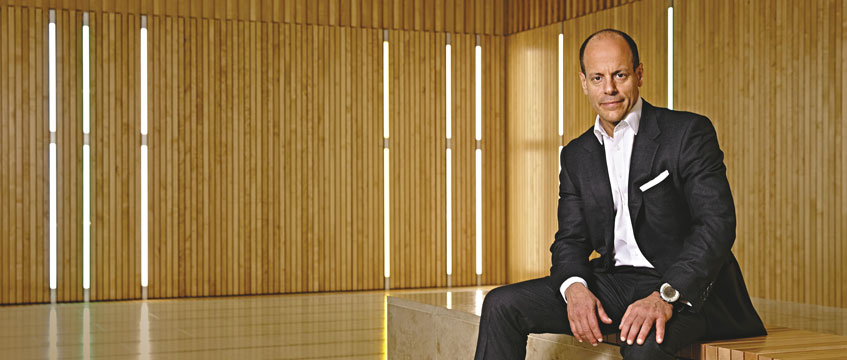Andrea Carpenter looks at different organisations swept up by net demand, and explains how diverse space needs may change with age
As the internet makes its mark on every aspect of life, the changes this new sector of the computer industry has brought to management style and business approach are having a profound effect on property requirements.
The changes are a reflection of how business culture and mood can permeate the buildings which house the forward-thinking companies of the time; first the opulence of the 1980s marble-encrusted trophy buildings versus the toned-down versions in the caring, sharing 1990s. However, for 2000 and beyond with internet companies leading the charge, the changes are more than just aesthetic with location, lease and specifications undergoing a radical overhaul.
The demand from internet companies is continuing unabated, according to recent research from DTZ Debenham Tie Leung on the impact of the internet on the central London office occupation market. It reports that in the first quarter of 2000, take up and active occupier requirements totalled more than 75,000m2 (800,000 sq ft).
It is central London that has felt the impact of the internet revolution most; this is probably due to its good communications/telecoms links combined with its trendy and creative reputation on a global stage. While those companies more involved in the systems side of the internet such as Oracle and Cisco (see box) have stuck to the Thames Valley corridor as their location, central London is certainly a hub for the creative front end of the internet. The sector cannot be defined easily – DTZ’s research says it encompasses those providing the software applications enabling business to be conducted online, portals and search engine companies such as Yahoo! and Lycos, and those conducting business online such as lastminute.com and bookseller amazon.com. The sector will also have a large following in terms of consultancy and design.
First in the minds of internet companies appears to be image with youth culture shaping the aesthetics. “They want to employ creative individuals and they do not like things such as standard air conditioning,” says Ray Walker, consultant at specialist internet agency Space Station. And in the internet world, many of these creative individuals are in their 20s and so the space has to reflect this.
“A lot of it is window dressing,” says Andrew Harrison of architect DEGW. “They are trying to say: ‘We are a new business’. As they become more stable – and they grow up very quickly – there is less of a concern about the trendiness and more about the function of the business.”
All this boils down into large floor-to-ceiling heights, lots of natural daylight and services stripped back for a more industrial look.
In location terms the zenith, Soho, is almost full leading to expansion in No-ho (North of Oxford Street) and the area around Charlotte Street. “Great Portland Street is not hot yet but it will get there,” says Walker.
Outside the West End, up-and-coming areas are Clerkenwell, Shoreditch (around Liverpool Street station) and Farringdon. This allows them to find the more unconventional space to suit their requirements and cheap space in many cases. For example, Trueman’s Brewery in E1, has attracted internet companies and offers space for around £161.50 per m2 (£15 per sq ft).
But the image is also important for staff retention. Young software and internet experts can command very high salaries and are part of a competitive labour market where location and building style are almost part of the job package. “The quality of the office is quite important, it is an intensive labour market. We have got to run a business with a work environment that is better than competitors’,” says Guy Bishop, associate director, office agency, at CB Hillier Parker.
Adds James Maddock, director at DTZ. “It is part of a new management style; who is the business advertising to? You have to create an environment pleasing to these people.”
The more fringe locations tend also to suit the working patterns of the staff and complement the inner city dwelling lifestyle. They tend to work long, irregular hours and want to be located in an area of good services and nightlife to support this non-conforming lifestyle.
These requirements also have a wider regenerative impact. “It’s a lot of potential regeneration of downtown areas. Redeveloping old offices and the recreation of places. The knock-on effect is more significant than the individual companies’ needs,” says Harrison.
But to add to this young, funky type of company is also the more corporate organisation getting in on the act. “In the last six months a lot more conventional companies are coming to the market and looking for more conventional space,” says Walker. These are usually well-established companies setting up e-commerce divisions. Walker says internet incubator companies such as Antfactory and Brainspark, which provide space and support services for small companies, are also more drawn to conventional space. “They are going more for out-of-town space,” he adds.
Maddock has also seen this trend growing, particularly among mature (relatively speaking in this industry) companies from the US looking to conquer Europe. “The more mature companies are over here to win business. They have fortune euro 500 companies as clients,” he says. These companies are looking mid-town, north of Oxford Street, prime Mayfair and around Ludgate if they have clients in the City. “One area they have not captured is Victoria, that will come now as there is nothing anywhere else.”
Maddock adds that there is also often a distinction on space compared to how the enterprise is funded. “US companies have no cost problems. They come and go wherever they want and are prepared to pay. They expect to pay for flexibility.”
For others cheap space while building up the business is key. This is reflected in DTZ’s research which shows that in the West End between 1998 and 2000, rental performance for internet companies was around £323 per m2 (£30 per sq ft). This was well below the central London average of £700 per m2 (£65 per sq ft) and also below the IT best sector which produced £484 per m2 (£45 per sq ft). Around 30% of the space taken up by internet companies between 1998 and 2000 was considered poor secondhand.
One thing all the companies have in common is the need for good communications, particuarly broadband access, which allows the high-speed exchange of information. “Most of central London is already wired up so it is not a big issue,” says Bob Thompson, head of e-business at King Sturge. He says a normal modem link would be 56 kilobytes per second, whereas 2 megabytes is the business requirement.
Most buildings will have access to this level of communications. Thompson says that some landlords are now providing the building with an optical fibre backbone which means taking the communication link one step further. The tenant will only have to arrange access from the floor rather than from outside the building.
While all landlords are not yet up to speed on what internet companies want, CLS, advised by Edward Charles, has a building at 172 Drury Lane in which incubator Speed Ventures has taken a portion of the space with the remainder to be let on smaller units in a one to three year lease format. The building will have good cabling and charge companies £645.80 per m2 (£60 per sq ft) which includes rates and service charges.
Thompson says you also have to be mindful that much of this communications link will soon go wireless but until this is a proven route, many businesses will like the security of a non-wireless link.
The other issue close to the heart of all internet companies is flexibility and their demand for such is having a big impact on acceptable lease structure. DTZ’s research shows that in central London, as an average, under 20% of leases in 1998 to 2000 were five years or under, or had a break before five years. For the internet sector, this is close to 50%. The serviced office sector is also doing well out of this trend. DTZ reports that MWB Business Exchange has around 70% of its licences with internet, telecom and IT-related companies.
|
Growing up |
|
Internet youngsters empowered |
|
So where are these sectors going? While the likes of Microsoft, Cisco and Computer Associates appear now to be traditional computer companies, it has only been a couple of decades since such companies were being set up in garages and secondhand office space in the US. It surely follows that the young upstarts of the internet generation will evenutally tire of their funky image and feel a more corporate route is needed. “You could almost say that they are the mature beings of the internet phenomenon. Their needs are very corporate in the old sense with lots of US corporate governance,” says Chris Hiatt, European director, national office leasing at Jones Lang LaSalle. “They are taking buildings as you would expect.” This means M4 corridor, where they too try and give themselves a good quality of life to attract the best staff in a ferocious jobs market. The office space is mainly standard as the many of the buildings house sales and marketing functions – this is demonstrated by Cisco taking speculative space along the M4. It is only when they need research or lab-type space – often for the storage of racks of computers – that the specifications become interesting. Trevor Silver, managing director of Akeler, says the company is talking to one company with a major power requirement. “We offer 45w per m2 and that has always been enough. This company wants 500w per m2. That amount of power also has an effect on cooling requirements,” he says. The companies also require a second power supply source, known as the redundant supply. He too believes that internet companies will follow the maturation of other computer companies. “It is almost an age thing. Software experts are young things but they’ll settle down, have kids and start to experience the same pressures and want to live in the country.” |










